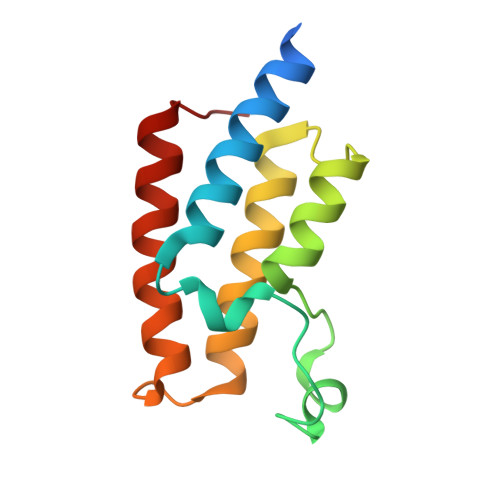Structure-Based Identification of Inhibitory Fragments Targeting the p300/CBP-Associated Factor Bromodomain.
Chaikuad, A., Lang, S., Brennan, P.E., Temperini, C., Fedorov, O., Hollander, J., Nachane, R., Abell, C., Muller, S., Siegal, G., Knapp, S.(2016) J Med Chem 59: 1648-1653
- PubMed: 26731131
- DOI: https://doi.org/10.1021/acs.jmedchem.5b01719
- Primary Citation of Related Structures:
5FDZ, 5FE0, 5FE1, 5FE2, 5FE3, 5FE4, 5FE5, 5FE6, 5FE7, 5FE8, 5FE9 - PubMed Abstract:
The P300/CBP-associated factor plays a central role in retroviral infection and cancer development, and the C-terminal bromodomain provides an opportunity for selective targeting. Here, we report several new classes of acetyl-lysine mimetic ligands ranging from mM to low micromolar affinity that were identified using fragment screening approaches. The binding modes of the most attractive fragments were determined using high resolution crystal structures providing chemical starting points and structural models for the development of potent and selective PCAF inhibitors.
- Nuffield Department of Clinical Medicine, Structural Genomics Consortium and Target Discovery Institute, University of Oxford , Old Road Campus Research Building, Roosevelt Drive, Oxford, OX3 7DQ, U.K.
Organizational Affiliation:



















